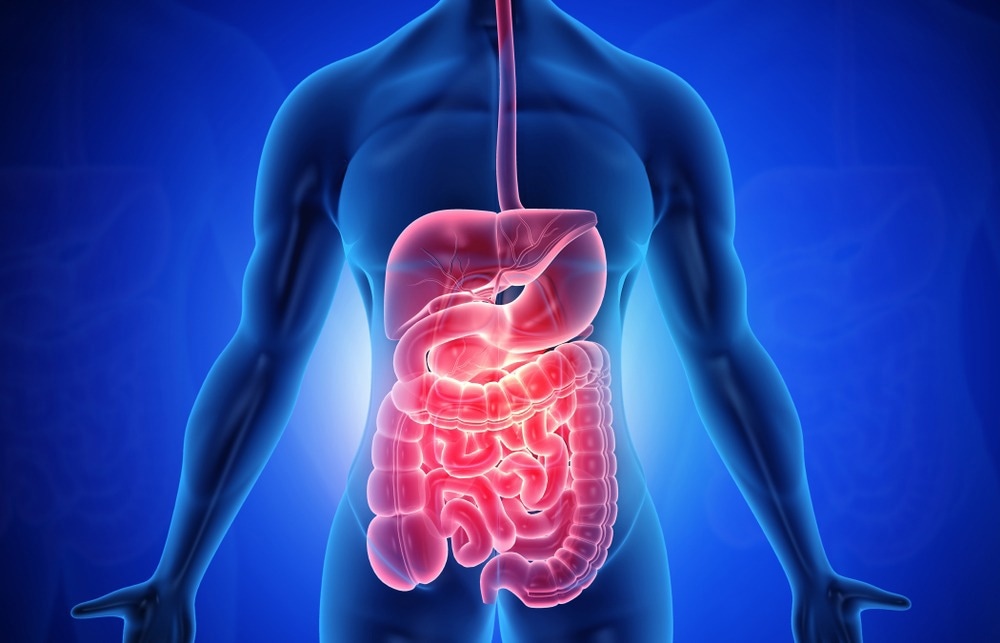In a recent study published in the Journal of Clinical Medicine, researchers reviewed the gut pathophysiology of severe acute respiratory syndrome coronavirus 2 (SARS-CoV-2) infection.
 Study: Gut as an Alternative Entry Route for SARS-CoV-2: Current Evidence and Uncertainties of Productive Enteric Infection in COVID-19. Image Credit: Explode/Shutterstock
Study: Gut as an Alternative Entry Route for SARS-CoV-2: Current Evidence and Uncertainties of Productive Enteric Infection in COVID-19. Image Credit: Explode/Shutterstock
Background
Although primarily a respiratory disease, coronavirus disease 2019 (COVID-19) also causes gastrointestinal (GI) symptoms to varying degrees among patients, with symptoms like diarrhea, nausea, abdominal discomfort, and vomiting, among others. GI disorders are thought of as the direct consequences of SARS-CoV-2 infection, as viral RNA is detected in many patients’ fecal matter.
However, the mechanisms underlying diarrhea in COVID-19 are poorly known. In the present study, researchers evaluated whether the gut is an alternative entry for SARS-CoV-2 and thereby responsible for GI disorders.
Evidence of SARS-CoV-2 enteric infection
Small intestinal enterocytes express the highest levels of angiotensin-converting enzyme 2 (ACE2) in humans and co-express transmembrane protease, serine 2 (TMPRSS2). However, one study did not observe any correlation between ACE2 expression and infectivity of cells in intestinal organoids. Another study observed SARS-CoV-2-infected cells in intestinal organoids regardless of surface ACE2 expression, suggesting an alternative entry mechanism or ACE2 downregulation post-infection.
Nevertheless, ACE2-knock-out (KO) experiments with intestinal organoids have indicated ACE2 as an obligatory receptor for viral entry. SARS-CoV-2 infection of human intestinal cells has been reported to lead to an innate response mediated by type III interferon (IFN). Intriguingly, researchers in a study observed pro-inflammatory and IFN-stimulated gene (ISG) expression profiles in infected and bystander cells in intestinal organoids.
SARS-CoV-2 replication was less efficient in human intestinal tissues ex vivo, with a robust innate response inducing types I and III IFNs. This contrasts observations in ex vivo lung tissues where the virus replicates more efficiently but triggers attenuated IFN responses. Viral RNA has been consistently detected in the stools of COVID-19 patients. The viral load in the fecal matter was as high as 107 copies/g, suggesting that IFN responses did not impair the enteric infection.
Besides, viral RNA has also been detected in untreated wastewater. In a study where COVID-19 patients presented GI symptoms and underwent endoscopic examination, viral RNA was detected in the stomach, duodenum, and rectal specimens of those with severe disease. In contrast, viral RNA was detected only in the duodenum in non-severe patients.
Evidence of damage to intestinal barrier caused by SARS-CoV-2 infection
SARS-CoV-2 causes cytopathic effects in the lungs, triggering apoptosis in epithelial cells. Hence, SARS-CoV-2 can induce cell death leading to alterations to tight junctions, mucus layer, or the disruption of epithelial monolayer integrity. Disruption of intestinal barrier layers results in leaky gut, viz., increased intestinal permeability, which allows commensals and other pathogenic bacteria to move into lamina propia and subsequently enter the systemic circulation.
One study reported that cell death in intestinal organoids following SARS-CoV-2 infection was not extensive. Contrastingly, in vitro studies with gut-derived organoids uncovered observable disintegration of organoids associated with apoptotic markers. Viable SARS-CoV-2 particles must reach the lumen of the gut as infectious virions to be able to replicate in the GI tract.
Unlike enteric viruses, enveloped viruses could be eliminated by exposure to gastric juices and the mucus layer in the GI tract. Evidence suggests that SARS-CoV-2 remains stable across a wide range of pH, yet it lost infectivity in a gastric fluid of pH 1.5 – 3.5. Moreover, rapid inactivation of SARS-CoV-2 by enteric juice was observed in the colon’s lumen, implying that inactive SARS-CoV-2 particles reach the gut lumen. Alternatively, other cells such as lymphocytes or even bacteria may transport SARS-CoV-2 to the gut.
One study observed SARS-CoV-2 replication in vitro in a bacterial growth medium. Fluorescence and electron microscopic examinations have shown the presence of SARS-CoV-2 particles inside bacteria. Notwithstanding the excess ACE2 expression in the human gut and in vitro SARS-CoV-2 infection of enterocytes, the healthy human gut might not be permeable to viral entry due to antiviral responses, GI fluids, and multiple protective layers of the intestinal barrier.
Nonetheless, there is evidence of intestinal SARS-CoV-2 infection, suggesting that the gut may become permissive to infection under some conditions. Further research is required to comprehensively delineate the conditions of in vivo SARS-CoV-2 infection of human enterocytes. Although viral RNA has been detected in patients’ stools, current data on recovering infectious viral particles from feces are contradictory.
Concluding remarks
Many outstanding questions regarding the interactions between SARS-CoV-2 and the human gut still pervade. For instance, it remains to be established whether an active SARS-CoV-2 replication occurs in the intestine. Besides, certain conditions might make the gut susceptible to SARS-CoV-2 replication, albeit the underlying mechanisms remain poorly defined.
Moreover, whether GI symptoms, specifically diarrhea, are the direct consequences of SARS-CoV-2 infection of the GI tract or local/systemic immune activation remains unclear. Current evidence moderately supports the notion of GI tract as an alternative portal for SARS-CoV-2 dissemination. Taken together, a better, more comprehensive understanding of the GI implications of COVID-19 is required to improve disease management and design innovative therapies.